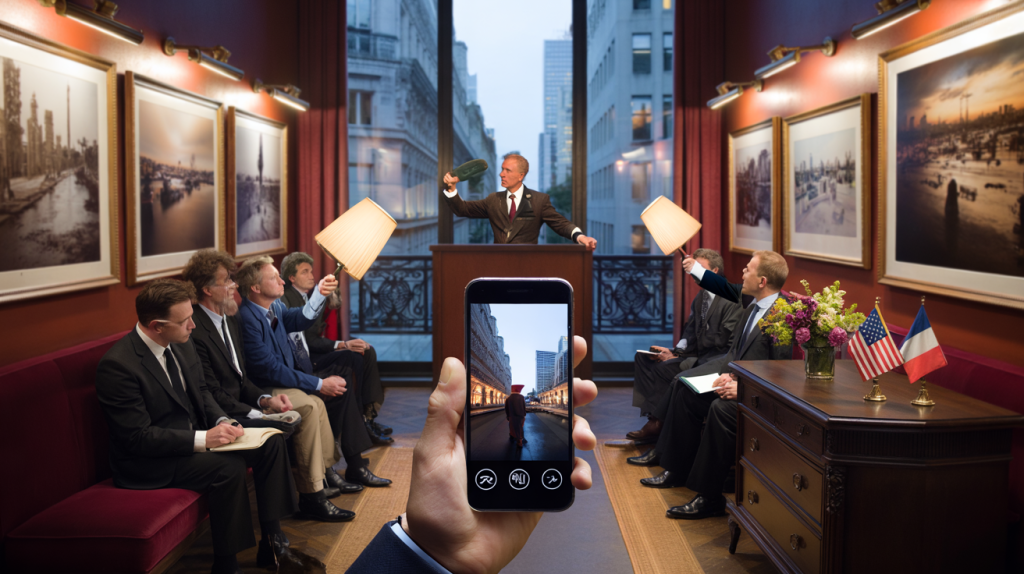Collectors are already scanning the calender for Sotheby’s next photography sales, where a single print can rewrite a collection overnight and estimates move fast. The houses release dates in clusters, and the best lots often appear when New York wakes up in spring and when Paris turns into a photography capital in November.
Here is the essential: Sotheby’s typically schedules live Photographs sales in New York during the spring and fall seasons, anchors a Paris session around Paris Photo week in November, and runs online sales throughout the year on its platform. If the goal is to plan bids or consign, tracking the official sale calendar and preview schedules is the shortest path to an early advantage.
Prochaines ventes photographie Sotheby’s, the quick view
Photography enters prime auction windows twice a year. Spring in New York brings a focused Photographs auction, often aligned with broader contemporary art weeks. Autumn repeats the cadence, then Paris joins the conversation as Paris Photo pulls galleries, curators and serious buyers into the same city each November.
Expect online Photographs auctions to bridge those peaks. These digital catalogues tend to be thematic or single-owner, a useful entry point for works by Irving Penn, Richard Avedon, Helmut Newton, Diane Arbus or Robert Mapplethorpe. Catalogues usually publish several weeks ahead with condition reports and high-resolution images available on request.
Sotheby’s is not new to this field. The company was founded in 1744, and its photographs department has shaped sales that mix early processes, modern masters and contemporary experiments. That heritage still guides lot selection and estimate discipline today.
How to track the next Sotheby’s Photographs sale and register
The fastest way to confirm dates is the Sotheby’s sale calendar on the official site, filtered by category Photographs and by location. Once a catalogue appears, set alerts for lots, then secure bidding access well before the first lot opens.
- Create a Sotheby’s account, complete identity verification, and request bidding approval for the specific sale.
- Study the catalogue, condition reports, and any provenance notes, then request additional images or viewing if needed.
- Visit the public preview, in person or virtually, to judge scale, surface, and paper tone under real light.
- Set a firm maximum and place a commission bid in advance, or register for live online and phone bidding.
- Watch recent comparable results for that artist, edition size, print date, and signature type to calibrate your ceiling.
Registration policies differ by sale format. Some live sessions require financial references or a deposit for first-time bidders. Online only auctions are simpler, but approvals can still take time, so early action avoids unwanted surprises at the rostrum.
Prices, records and market context for photography
Photography’s ceiling keeps rising with the right image and provenance. The current auction record for a photograph is 12.4 million dollars for Man Ray’s “Le Violon d’Ingres”, sold in New York on 14 May 2022, source Christie’s. While that headline belongs to a rival house, it frames the potential for museum grade works and explains why blue-chip images attract cross-category collectors.
Wider conditions matter too. According to the Art Basel and UBS Art Market Report 2024, global art sales reached about 65 billion dollars in 2023, a decrease of 4 percent year on year, with public auction sales softening compared with 2022, source Art Basel and UBS. For photographs, that often translates into selective bidding on rarities and strong participation for iconic subjects in excellent prints. Edition size, print date relative to the negative, paper type and signature placement all move the needle on price.
Collectors who plan for fees read the fine print. Buyer’s premium and taxes add to the hammer price, and the total can exceed the high estimate when bidding stretches. Provenance from a noted private collection or exhibition history can justify a premium, while later prints or large editions may track closer to estimate midpoints.
What to expect on sale day, from previews to bidding
Previews come first. The viewing rooms in New York or Paris tend to present photographs in natural light where surface, tonality and mount condition are easy to judge. Staff specialists answer technical questions about silver gelatin, dye transfer, platinum palladium, or chromogenic prints, and will flag conservation notes when relevant.
On the day, bidding flows in set increments. Absentee bids compete with the room, phones and online console. A lot closes when the auctioneer brings down the gavel and announces the paddle. In competitive moments, a single extra increment can secure a rare early print, while a measured pause can leave it for the underbidder.
After the sale, settlement and collection timelines are straightforward. Invoices include hammer plus buyer’s premium and applicable taxes. Release depends on payment clearance, and shipping can be arranged through the house or a preferred fine art handler. If a desired lot slipped away, watch the next catalogue cycle, since high demand images often reappear in the following season.
The missing piece for many buyers is timing. Photography at Sotheby’s concentrates around spring New York weeks and November Paris Photo energy, with online sales punctuating the calendar. Set alerts on the official calendar, register early, confirm condition, and align your maximum with recent comparables. That is how bids turn into smart acquisitions when the next Photographs sale opens.
